Unmanned aircraft Tu-143 Flight
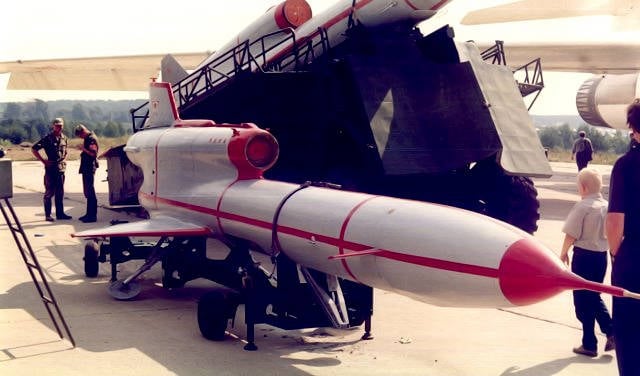
In the mid-sixties, the Tupolev Design Bureau began the creation of new tactical and operational unmanned reconnaissance systems. 30 August 1968 of the year issued a decree of the Council of Ministers of the USSR N 670-241 on the development of the new unmanned tactical reconnaissance complex Reis (BP-3) and the unmanned reconnaissance aircraft 143 (Tu-143) entering it. The deadline for presenting the complex for testing in the Resolution stipulated: for the version with photo reconnaissance equipment - 1970 a year, for the version with equipment for television reconnaissance and for the version with equipment for radiation reconnaissance - 1972 a year.
Developer: Tupolev Design Bureau
Country: USSR
First flight: 1970
Type: Tactical reconnaissance UAV
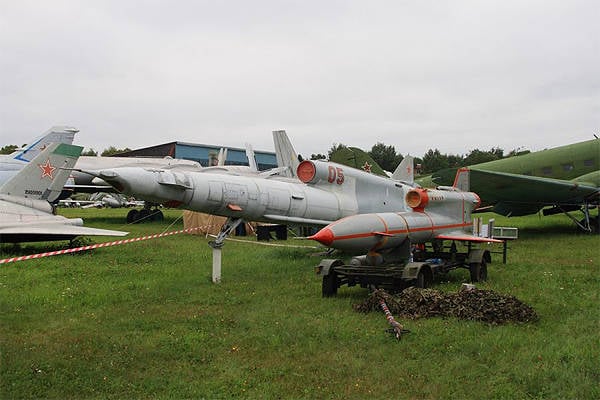
In the technical specifications for the new-generation complexes, in addition to autonomy, mobility and other tactical and technical requirements, a number of items were added, the fulfillment of which forced the developers to seriously reconsider the design, production and testing of unmanned complexes and its elements. In particular, the aircraft had to be reusable, to fly both at low and at high altitudes in the 50-5000 m range, as well as over mountainous areas. Particularly raised the question of achieving the minimum values of the EPR for the reconnaissance aircraft. High demands were placed on the flight-navigation complex, which was supposed to provide a reasonably accurate exit of the reconnaissance aircraft to the reconnaissance area and to the landing area of size 500-500 m, where the landing took place after the mission was completed. The small time allotted for the assignment to the preparation and launch of the reconnaissance aircraft required the development of a new onboard equipment complex based on modern elemental base, as well as the creation of an engine with a high degree of reliability.
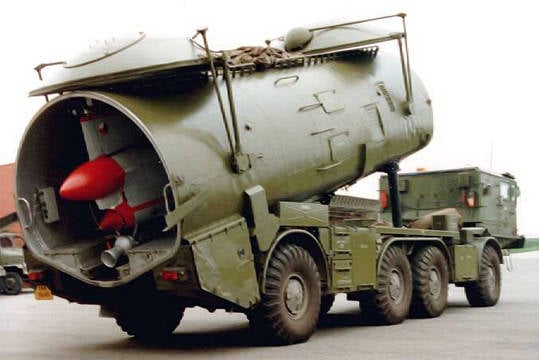
As in the case of work on the Strizh complex (Tu-141), when creating a new unmanned tactical reconnaissance complex, the enormous experience accumulated by this time in the OKB and related enterprises and organizations obtained during nearly a decade of unmanned aircraft was used. intelligence topics. Chief Designer G.M. Gofbauer, and after his death, Chief Designer L.T., led all the work on the Reis and Reis-D complexes in the Design Bureau. Kulikov.
The complex of tactical intelligence "Flight" was developed and tested in the shortest possible time. In December, 1970, the first successful flight of the UAV Tu-143 took place. In 1972, joint state tests began, which ended with successful results in 1976, after which the Reis complex was adopted by the Soviet Army. Serial production of the complex began during the state tests. In 1973, at the Machine-Building Plant in the city of Kumertau (Bashkiria), an experimental batch of X-NUMX Tu-10 UAVs was launched into serial production, and soon the full-scale production of the complex began. In all, before the end of the series, in 143, the 1989 reconnaissance UAV Tu-950 was released.
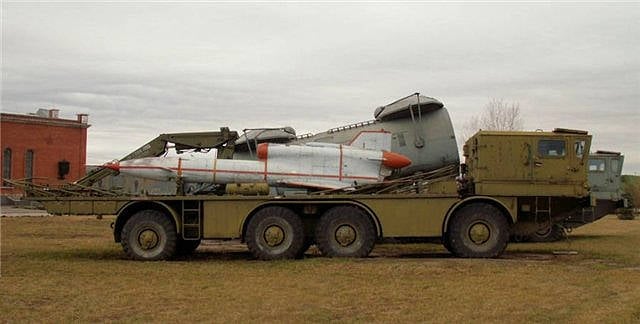
The new complex was quickly mastered by the troops and was praised as a reliable, highly effective means of tactical intelligence. Designed and built by order of the Air Force, the complex became widespread in the ground forces and was also used in other branches of the armed forces. When conducting exercises of various branches of the armed forces, the Reis complex convincingly showed significant advantages in comparison with manned tactical reconnaissance equipment equipped with similar equipment. An important advantage of reconnaissance UAV Tu-143, as the carrier of reconnaissance equipment, was the presence of NPC, which provided more accurate access to the reconnaissance area in comparison with manned tactical reconnaissance aircraft of the Air Force of that period (MiG-21P, Yak-28P). But it was precisely this that largely determined the quality of aerial reconnaissance and ultimately the fulfillment of the mission. This was especially important when solving problems in several reconnaissance areas in a single flight and when they were closely located in different directions.
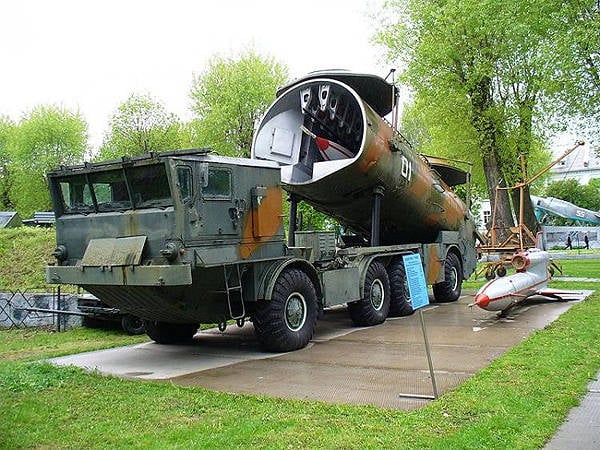
The strict stabilization of the Tu-143 reconnaissance UAV in reconnaissance areas, the required temperature conditions in the instrument compartment under flight conditions ensured optimal working conditions for reconnaissance equipment and obtaining high-quality information. Aerial photographic equipment mounted on a scout allowed from a height of 500 m and at a speed of 950 km / h to recognize objects on the ground in dimensions from 20 cm and above. The complex has proven itself in terms of use in mountainous areas with launches and landings at sites at altitudes up to 2000 m above sea level and during mountain fly-overs up to 5000 m. When used in mountainous areas, the Reis complex became almost invulnerable to enemy air defenses that made it an excellent means of conducting combat operations in the conditions of the mountain regions of the Caucasus and the Asian theater of military operations, as well as over the mountain regions of Europe (the Alps, the Carpathians, the Pyrenees, etc.). The Reis complex was exported to Czechoslovakia, Romania and Syria, where it took part in hostilities during the Lebanese conflict at the beginning of the 80s. In Czechoslovakia, the Reis complexes arrived in the 1984 year, two squadrons were formed there. Currently, one of them is in the Czech Republic, the other is in Slovakia.
The reconnaissance UAV Tu-143 was serially produced in two versions of the bow replacement part: in the version of the photo reconnaissance with the registration of information on board, in the version of television intelligence with the transmission of information over the air to ground command posts. In addition, the reconnaissance aircraft could be equipped with radiation reconnaissance equipment with the transfer of materials about the radiation situation along the flight route to the ground via a radio channel. UAV Tu-143 presented at the exhibition of samples aviation technicians at the Central airfield in Moscow and at the Museum in Monino (there you can also see the Tu-141 UAV).
In 1985, the UAV was released as an unmanned target M-143 or BP-ZVM. The target successfully passed the state tests, which showed good possibilities of imitating aircraft for various types of signatures.
At the end of 70-x - the beginning of 80-s, the design bureau developed a modification of the UAV Tu-143 for the campaign container. In this variant, the nose compartment with reconnaissance equipment was replaced with a compartment in which, instead of reconnaissance, 11 packs of propaganda materials with a total weight of 19 kg with means of their discharge were placed. Agitmaterials were discharged from three wells of the container simultaneously or sequentially. The reset command came from the ABSU in accordance with the command entered on the ground before the start.
Organizationally, the units equipped with the Reis complex consisted of squadrons, each of which had 12 reconnaissance UAVs Tu-143, four launchers, and also had the means to prepare, ensure the launch, landing and evacuation of reconnaissance, command post, communications centers, para processing and interpretation of intelligence information, TEC, where reconnaissance aircraft of subsequent launches were stored. The fixed assets of the complex were mobile and transferred with the help of standard squadron vehicles.
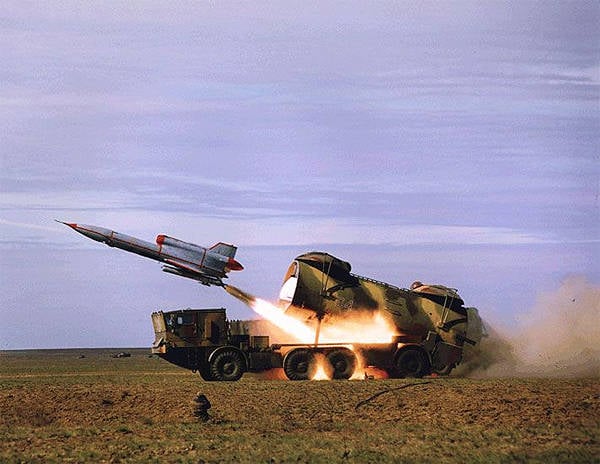
The Reis complex was designed to conduct tactical reconnaissance in the front-line zone at a depth of 60-70 km by photographing and television reconnaissance of area targets and individual routes, as well as monitoring the radiation situation along the flight route. The complex is equipped for reconnaissance of areas of concentration of troops and military equipment, for reconnaissance of engineering structures. The complex provided reconnaissance at low altitudes of flight in low-cloud conditions, secretive preparation and launch of reconnaissance UAVs Tu-143 from unprepared engineering positions, autonomy of combat use, mobility, quick change and redeployment under its own power, the ability to obtain reconnaissance information when using a radio link time scale close to real. The complex during the operation performs the following functions:
preparation for launching and launching reconnaissance UAVs Tu-143 from self-propelled launchers at wind speeds up to 15 m / s;
automatic flight control of a Tu-143 UAV at given altitudes;
programming of the flight trajectory and the moments of switching on and off the onboard reconnaissance equipment;
photographing, television reconnaissance and collecting information about the radiation situation;
delivery of intelligence information to a given point, as well as the transfer of information from the board over the radio link to ground points.
The complex has the following characteristics that determine its capabilities and technical excellence:
reconnaissance flight range - 170-180 km;
Depth of exploration - 70-80 km;
Scout's flight speed - 875-950 km / h;
the height of the start of the scout - 0-2000 m;
altitude of photo-prospecting flight −200-1000 m;
altitude of the television reconnaissance mission - 300-1000 m;
the photographing strip (in fractions of the flight altitude) —10 N; length −220 Н;
television intelligence bandwidth - 2,2 H;
Radiation reconnaissance bandwidth - 2 Н;
the number of turns along the flight path is 2;
range for relocation of a complex with a reconnaissance prepared for launch - up to 500 km;
the speed of ground vehicles on highways, day −45 km / h, at night - 30 km / h;
preparation time for the launch of the UAV from the starting position - 15 min;
preparation time for restarting is 4 hours;
the ability to reuse the intelligence of the BPL-to 5 times.
The complex "Flight" included:
reconnaissance UAV Tu-143 with on-board system of program-command control and interchangeable reconnaissance equipment;
a set of ground support facilities for preparing for the launch, launch, transportation and maintenance of Tu-143 UAVs;
mobile ground-based means of receiving, processing, decrypting and transmitting intelligence information.
Reconnaissance UAV Tu-143 is designed according to the “tailless” scheme. It is an all-metal monoplane with a low-lying triangular wing of small elongation. In the front part of the aircraft fuselage, there is a fixed triangular-shaped destabilizer in the plan, which provided the necessary stability margin for marching flight modes. The triangular wing had a sweep along the leading edge 58 degrees and a slight reverse sweep along the trailing edge. The fuselage is of circular section with the transition to the oval in the installation zone of the main turbojet engine The air intake was located above the fuselage, and in its tail, in the zone of installation of the vertical tail, passed into the tail parachute container. Elevons were located throughout the trailing edge of the wing, which were controls for both roll and pitch. Vertical plumage, with sweep along the leading edge of the 40╟, consisted of a keel with a small fork and a rudder. The main materials from which the UAV was made were D-16 aluminum alloy and its modifications, AMG-6 magnesium alloy and composite materials (glass fabrics with honeycomb fillers). The small size of the Tu-143 UAV, the location of the air intake on top of the fuselage and the use of appropriate materials contributed to the reduction of the EPR.
Structurally and technologically, the fuselage of the reconnaissance UAV Tu-143 was divided into four compartments: F-1, F-2, F-3 and F-4.
The nose compartment of the F-1, which was a removable design, was completely removable (a container with photo equipment or a container with television equipment), and also provided for the replacement of individual units. The compartment was made of fiberglass and had a photo camera for the lenses of the corresponding equipment. The reconnaissance equipment in the compartment was located on the core frame. The F-1 compartment was bolted along the contour to the 3 frame of the fuselage, and its front end rested on the front end of the core frame of the compartment. The nose compartment of the F-1 could be undocked from the fuselage and stored separately.
Compartment F-2 served to accommodate on-board control equipment and power supply system.
The compartment of the fuselage F-3 and served to accommodate the fuel tank, inside which passed the channel of the air line from the air intake to the engine, fuel pump, fuel cell, anti-overload device and hydraulic pump. Inside the compartment was installed marching engine type TRZ-117 with a box of units. The engine was connected to the air intake with the help of an attachment, which was constructively integrated with the oil tank. To the starter generator mounted on the engine, a branch pipe with cooling outside air approached.
The F-4 fuselage compartment was an engine nacelle, in the upper part turning into a parachute container and vertical tail. In the parachute container there was a landing parachute, and in its dropping coke there was a braking parachute. Under the parachute container in a special fairing, discharged together with the cook, there were pyro-locks of the nodes for uncoupling the brake parachute and the landing gear of the landing parachute. Under the fuselage was the starting solid-fuel accelerator type SPRD-251.
The landing gear consisted of a three-leg heel-type chassis, produced during landing. The front support was removed in the compartment F-2, the two main supports - inside the wing consoles. The progressive horizontal speed was extinguished with the help of the brake parachute, the vertical landing with the help of the landing parachute and the brake solid-fuel engine, triggered by a touch of the wing probes of the brake system.
The reconnaissance equipment in the photo reconnaissance version consisted of a panoramic PA-1 aerial camera with a reserve of 120 photographic film. The photographing intervals were set automatically depending on the flight altitude received from the ABSU.
Television reconnaissance was carried out with the help of apparatus type I-429B "Chibis-B", with the transmission of a television image to the ground via a radio channel connecting the board and ground points. At the same time, reference tags for the distance from the ABSU were transmitted to the ground.
Radiation reconnaissance was carried out using Sigma-R equipment, with the possibility of transmitting information over the air.
The automatic on-board control system of the ABS-143 was designed to stabilize the UAV relative to the center of mass, maintain the specified flight parameters in the automatic programmed mode, issue commands and current information to the reconnaissance equipment, as well as the necessary commands to the landing system. ABS-143 included:
autopilot AP-143
Doppler velocity meter and drift angle DISS-7
B-143 calculator
low-altitude radio altimeter A-032
height entry unit BVV-1
The signals from the ABSU using the hydraulic system controlled the controls of the aircraft. The pressure in the system was created by an electro-hydraulic pump of the 465P type, direct control from three steering machines of the RM-100 type.
The combat use of reconnaissance UAV Tu-143 was provided by means of a starting position, which included:
SPU-143 self-propelled launcher
transport-loading machine TZM-143
Both based on the BAZ-135MB. With the help of SPU-143, the aiming and launching of the reconnaissance aircraft was carried out; with the help of TZM-143, operations of transportation, evacuation from the landing site and preparation were carried out.
Operational, periodic maintenance of the Tu-143 UAVs was carried out in a technical position. It consisted of KIPS-1, KIPS-2 control stations and the APA-50М power supply, which were part of the KPK-143 control complex, a set of mobile means for refueling the aircraft with energy carriers (fuel, air, oil, etc.) , truck crane, firefighters and trucks. Delivery and storage of UAV Tu-143 carried out in containers.
At the landing site, the Tu-143 was landed and intelligence information was retrieved. To the site, with dimensions of at least 700 × 700, there were access roads for TZM-143 and a material collection laboratory.
The reception, processing and deciphering point of intelligence information POD-3 ensured the quick reception of intelligence information and its transfer to military channels of communication to consumers. The POD-3 included a laboratory for processing and interpreting photographic materials, a laboratory for receiving and recording data of television or radiation intelligence transmitted over a radio link from the onboard reconnaissance UAV, the materials collection laboratory and the autonomous power station ESD-30.
The interaction and combat work of the constituent elements of the complex was carried out as follows and in the following sequence:
the reconnaissance aircraft is in long-term storage, the nasal container with reconnaissance equipment, DISS-7, B-143 are conserved, packed and packed in shipping containers.
The re-entry was carried out by the technical position, autonomous and joint inspections of the onboard equipment and systems took place there.
Tu-143 fully equipped and prepared for use, including the installation of the squib cartridge in the landing system units. Conducted refueling supplies and comprehensive testing. In the transport position, the Tu-143 UAV in the SPU-143 and on the TZM-143 was located on supports. The TU-143 UAV Tu-143 was transported with undocked SPRD-251, and in the SPU-143 with docked SPRD-251.
Hardware "Square" displays the launcher at a given point with a certain accuracy (starting position).
The flight program prepared in advance was entered immediately before the start into the onboard data entry unit BVD-1.
The prelaunch test was conducted by combat crew, located in the SPU-143 cockpit. After the readiness signal was issued, the main engine was launched and the command to start was on. The squadron SPRD-251 was undermined and the reconnaissance aircraft launched at an angle 15╟ to the horizon. The safe separation of the SPRD-251 was provided by a special tear-off engine, triggered by the pressure drop of the gases in the starting accelerator.
At the exit section of the Tu-143 UAV to the mid-flight section, the ABS-143 provided acceleration with climb according to the program entered. During the entire flight, starting from the moment of launch, the ABSU ensured the stabilization of the UAV relative to the center of mass, as well as a constant calculation of the distance traveled and control by the angle of demolition. In addition to maintaining the programmed flight path, the ABSU issued to the reconnaissance systems and the landing systems the following data and commands:
distance traveled from the starting point;
the value of a given flight altitude;
the value of the current geometric flight altitude;
commands to enable and disable reconnaissance equipment;
command to stop the main engine when reaching a predetermined range;
the command to start the software mechanism of the landing system.
During the flight, reconnaissance was carried out along the route. Aerial photography on film was made along the entire flight route. In order to obtain operational intelligence, television reconnaissance was carried out, which provided updated information on the state of the objects whose deployment was known. Both types of intelligence are daytime. Photography intervals for photo survey were set automatically depending on the flight altitude received from the ABSU. The on-board television equipment transmitted a television image of the terrain via radio to the ground. Simultaneously with the video signal, distance labels transmitted from ABSU were transmitted to the ground to bind the image to the terrain. Reception of the television image on the ground was conducted within the limits of direct visibility.
At the end of the reconnaissance flight of the UAV Tu-143 unfolded according to the program and returned to the landing zone, where the landing operation was carried out.
The landing operation was carried out in two stages: the engine was stopped, the preflight maneuver (“slide”) and the landing itself using a two-stage jet-parachute system and a landing gear. The preflight maneuver was carried out in order to create the conditions for the launch of the deceleration parachute, which was produced at a decrease in speed at the end of the “slide”. At the 11 second, after the braking parachute was introduced, the landing parachute was dropped and put into operation, which transferred the Tu-143 UAV to the vertical descent mode. At the signal of the program mechanism of the landing system, a sequential intersection of the landing parachute, the release of probes and the chassis took place. The UAV was transferred to a horizontal position and descended on a parachute until it touched the ground with probes. When the probes touched the ground, a solid-fuel brake motor of a soft landing worked and the vertical descent rate decreased from 6 m / s to 2 m / s. At the moment of touching the ground during the compression of the shock absorbers of the supports “Flight-D chassis, the landing parachute and the brake engine were shot, this prevented the reconnaissance aircraft from scouting the parachute's sail area.
Further, a search for the landing site and the withdrawal of intelligence information and the delivery of a Tu-143 UAV were carried out for subsequent preparation for reuse.
LTH:
Wingspan, m 2.24
Length, m 8.06
Height, m 1.545
Wing area, m2 2.90
Weight, kg 1230
Engine type TRD TRZ-117
Thrust, kgf 1×640
Accelerator SPRD-251
Maximum speed km / h
Cruising speed, km / h 950
Practical range, km 180
Flight time, min 13
Practical ceiling, m 1000
Minimum flight altitude, m 10
Information